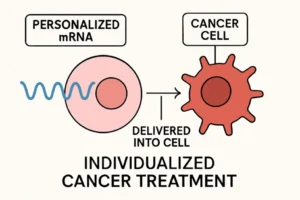Understanding the Importance of Transparency
Why Transparency Beats the Black Box Approach
The “black box” way of doing things? It’s all about mystery. You ask for something, hand it over, and then just wait. Transparency is the opposite. It means everyone knows what’s going on, every step of the way.
The problem with the black box is that expectations get messed up, and surprises cost a lot. By the time you realize there’s an issue, fixing it is a huge pain. Transparency helps avoid these problems.
Transparency builds trust. It makes sure everyone is on the same page. It creates a collaborative environment.
Building Trust Through Open Communication
Trust comes from transparency. It’s about being open from the start. Clear communication is key.
Clients need to know the goals early. They need updates as soon as possible. This makes the development partner feel like part of the team.
Development companies need to manage expectations. They need to be honest about what’s possible. Involving key people early on is a good sign.
The Cost of Misaligned Expectations
Misaligned expectations can really hurt a project. When people aren’t on the same page, things go wrong. It leads to wasted time and money.
Imagine building a house without clear blueprints. Everyone has a different idea of what it should look like. The result? A mess.
Transparency helps avoid this. It makes sure everyone knows the plan. It keeps everyone aligned.
Practical Applications of Software Development Transparency
Transparency isn’t just a buzzword; it’s a set of practices. It’s about showing your work, not just talking about it. Let’s look at how to make it real.
Establishing Open Communication Channels
Think of communication as a two-way street. Invite clients into your team’s daily conversations. It might feel weird at first, but it builds trust.
Use tools like Slack or Microsoft Teams. Create dedicated channels for each project. Let clients see the good, the bad, and the ugly.
This level of openness keeps everyone on the same page. It also helps catch problems early.
Providing Access to Development Artifacts
Don’t hide your work in a black box. Give clients access to the stuff you’re building. This includes code, designs, and documentation.
Use tools like Jira or Trello to track progress. Share access to your code repository (like GitHub or GitLab). Make sure clients can see the status of each task.
Transparency here means they can check in anytime. They can see exactly what’s happening and where their money is going.
Implementing Regular Check-ins and Demos
Daily stand-ups aren’t just for the dev team. Invite clients to join, even if it’s just once in a while. It’s a quick way to share progress and flag issues.
Sprint demos are another great way to show off your work. Show working software every few weeks. Get feedback early and often.
Regular check-ins and demos keep everyone aligned. They also help avoid surprises down the road. Transparency is key to a successful project.
These practices make transparency more than just a concept. They make it a reality.
Overcoming Resistance to Transparency
Addressing Developer Concerns About Exposure
Some developers might worry that transparency will reveal their mistakes. They might feel like they’re under constant scrutiny. It’s important to address these fears head-on.
Explain that transparency isn’t about blame, but about learning and improvement. Make it clear that everyone makes mistakes, and that open communication helps the team catch and fix issues faster. This creates a safer environment for everyone.
Transparency can actually build trust and confidence. When clients see how problems are addressed in real-time, they feel included in the process.
Fostering a Culture of Collaborative Problem-Solving
Create a culture where everyone feels comfortable sharing their ideas and concerns. Encourage open discussions about challenges and potential solutions. This helps to build a sense of shared ownership and responsibility.
Transparency thrives in an environment where collaboration is valued. When team members feel safe to speak up, they’re more likely to identify and address problems early on. This can save time and money in the long run.
Transparency isn’t about perfection; it’s about collaboration. When clients see how problems are addressed in real-time, they feel included in the process and reassured that their project is in capable hands.
Building Confidence Through Shared Challenges
Involve the entire team in overcoming challenges. When everyone works together to solve problems, it builds confidence and strengthens relationships. This also helps to create a more resilient and adaptable team.
Celebrate successes together, and learn from failures. This reinforces the idea that transparency is a valuable tool for continuous improvement. It also helps to build trust and understanding between team members.
Transparency isn’t about perfection; it’s about collaboration. When clients see how problems are addressed in real-time, they feel included in the process and reassured that their project is in capable hands.
Financial Benefits of Transparent Software Development
Saving Time and Money Through Early Issue Resolution
Transparent software development isn’t just about being nice; it’s about saving money. Early issue detection is key to keeping costs down. When everyone sees what’s happening, problems get fixed faster.
Think of it like this: a small bug caught early costs way less to fix than a major overhaul later. Transparency helps avoid those costly surprises.
It’s like finding a small leak in your roof before it causes major water damage. Fix it early, save a fortune.
Avoiding Costly Surprises and Rework
No one likes surprises, especially when they involve money. With transparency, everyone knows what to expect. This reduces the chance of unexpected costs.
Rework is a budget killer. When requirements are clear and progress is visible, there’s less need to redo things. This saves time and money.
Imagine building a house without blueprints. You’d probably end up tearing down walls and rebuilding them. Transparency is like having those blueprints from the start.
Optimizing Budget and Timeline Management
Transparency allows for better budget and timeline control. When everyone has access to the same information, it’s easier to make informed decisions.
Regular check-ins and clear communication help keep the project on track. This means fewer delays and less wasted money.
It’s like driving with a GPS. You know where you’re going, how long it will take, and how much it will cost. Transparency is your GPS for software development.
Selecting the Right Software Development Partner
Finding the right software development partner is a big deal. It’s about more than just coding; it’s about finding someone who gets your vision. A good partner can make or break your project.
Identifying Key Qualities in a Partner
What makes a great software development partner? Look for experience, of course. But also consider their communication skills and problem-solving abilities. A partner who can clearly explain complex issues is invaluable.
- Strong technical skills.
- Excellent communication.
- Proactive problem-solving.
Don’t underestimate the importance of a partner who is easy to work with. A smooth collaboration can save you headaches down the road.
Assessing Strategic Alignment and Cultural Fit
Does their approach match yours? Strategic alignment is key. You want a software development partner who understands your business goals.
- Shared values.
- Compatible work styles.
- Understanding of your industry.
A partner who shares your vision is more likely to deliver a product that meets your needs. It’s about more than just code; it’s about a shared understanding.
Cultural fit matters too. A partner who gels with your team will integrate more easily.
Leveraging Client References and Partnership Terms
Talk to their past clients. What do they say about the software development partner? Client references offer real-world insights.
- Responsiveness.
- Problem-solving.
- Adaptability.
Make sure the partnership terms are clear. Scope, ownership, and budget should all be well-defined. This avoids surprises later on.
Fostering Shared Ownership and Continuous Improvement
Integrating Your Partner into Decision-Making
It’s about making your software development partner feel like a real part of the team. Shared ownership means they’re not just following orders; they’re contributing ideas and insights. This can lead to better solutions and a stronger sense of commitment.
Think of it as extending your internal team. Include them in key meetings, solicit their feedback on strategic decisions, and treat their opinions with respect. This fosters a collaborative environment where everyone is working towards the same goals.
When partners feel valued, they’re more likely to go the extra mile. This integration builds trust and encourages open communication, which is essential for project success.
Establishing Clear Milestones and Communication Cadences
Clear milestones are like signposts on a journey. They provide a sense of progress and help keep everyone on track. Regular communication cadences ensure that everyone is informed and aligned.
Set up a schedule for regular updates, demos, and check-ins. This could include weekly status reports, bi-weekly sprint reviews, or monthly progress meetings. The key is to find a rhythm that works for everyone.
Don’t just focus on the technical aspects. Discuss business goals, user feedback, and any challenges that arise. This holistic approach ensures that the project is aligned with the overall business strategy.
Ensuring Post-Launch Support and Evolution
Software development isn’t a one-time event; it’s an ongoing process. Continuous improvement is essential for keeping your software relevant and effective. This means providing post-launch support and planning for future evolution.
Establish a clear process for bug fixes, updates, and new feature development. This could involve a dedicated support team, a regular maintenance schedule, or a system for prioritizing feature requests.
It’s important to have a plan for the long term. This includes budgeting for ongoing maintenance, planning for future upgrades, and staying up-to-date with the latest technologies.
By focusing on post-launch support and evolution, you can ensure that your software continues to deliver value for years to come.
Wrapping It Up
So, what’s the big takeaway here? It’s pretty simple: when you’re working with a software development partner, being open and clear about everything isn’t just a nice idea, it’s how you get good results. When everyone knows what’s going on, even the messy stuff, it builds trust. And that trust means fewer surprises, less stress, and a better product in the end. It might feel a bit uncomfortable at first, showing all your cards, but it really does make things smoother and helps everyone work together better. Think of it as making sure everyone’s on the same page, all the time. That’s how you get things done right.










